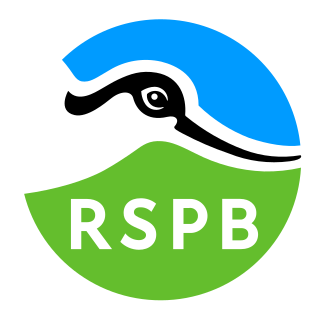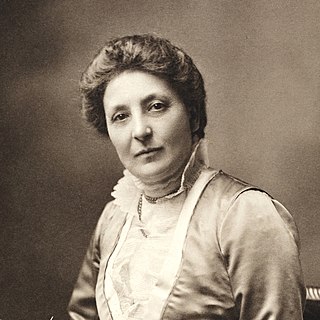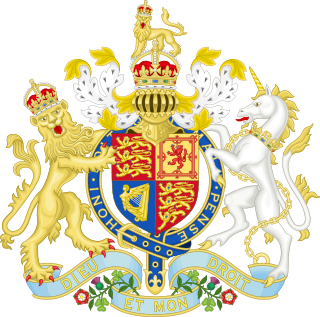
Emmeline Pankhurst was a British political activist who organised the British suffragette movement and helped women to win in 1918 the right to vote in Great Britain and Ireland. In 1999, Time named her as one of the 100 Most Important People of the 20th Century, stating that "she shaped an idea of objects for our time" and "shook society into a new pattern from which there could be no going back". She was widely criticised for her militant tactics, and historians disagree about their effectiveness, but her work is recognised as a crucial element in achieving women's suffrage in the United Kingdom.

The Royal Society for the Protection of Birds (RSPB) is a charitable organisation registered in England and Wales and in Scotland. It was founded in 1889. It works to promote conservation and protection of birds and the wider environment through public awareness campaigns, petitions and through the operation of nature reserves throughout the United Kingdom.

Didsbury is a suburb of Manchester, in Greater Manchester, England, on the north bank of the River Mersey, 5 miles south of Manchester city centre. The population at the 2011 census was 26,788.

The Women's Freedom League was an organisation in the United Kingdom from 1907 to 1961 which campaigned for women's suffrage, pacifism and sexual equality. It was founded by former members of the Women's Social and Political Union after the Pankhursts decided to rule without democratic support from their members.

Elizabeth Clarke Wolstenholme-Elmy was a British teacher, campaigner and organiser, significant in the history of women's suffrage in the United Kingdom. She wrote essays and some poetry, using the pseudonyms E and Ignota.

Barbara Leigh Smith Bodichon was an English educationalist and artist, a philanthropist and her greatest skill was as a facilitator. She was a leading mid-19th-century feminist and women's rights activist. She published her influential Brief Summary of the Laws of England concerning Women in 1854 and the English Woman's Journal in 1858. Bodichon co-founded Girton College, Cambridge (1869). Her brother was the Arctic explorer Benjamin Leigh Smith.

Fletcher Moss Garden is in Didsbury, Manchester, England, between the River Mersey and Stenner Woods.
Women have played a central role in animal advocacy since the 19th century. The animal advocacy movement – embracing animal rights, animal welfare, and anti-vivisectionism – has been disproportionately initiated and led by women, particularly in the United Kingdom. Women are more likely to support animal rights than men. A 1996 study of adolescents by Linda Pifer suggested that factors that may partially explain this discrepancy include attitudes towards feminism and science, scientific literacy, and the presence of a greater emphasis on "nurturance or compassion" amongst women. Although vegetarianism does not necessarily imply animal advocacy, a 1992 market research study conducted by the Yankelovich research organization concluded that "of the 12.4 million people [in the US] who call themselves vegetarian, 68% are female, while only 32% are male".
Ida Phyllis Barclay-Smith was a British ornithologist and editor of the Avicultural Magazine. She led the International Council of Bird Preservation. In 1958, she became the first woman to receive an MBE for work in conservation, and was made CBE for 1970.

Margaretta "Etta" Louisa Lemon was an English bird conservationist and a founding member of what is now the Royal Society for the Protection of Birds (RSPB). She was born into an evangelical Christian family in Kent, and after her father's death she increasingly campaigned against the use of plumage in hatmaking which had led to billions of birds being killed for their feathers. She founded the Fur, Fin and Feather Folk with Eliza Phillips in Croydon in 1889, which two years later merged with Emily Williamson's Manchester-based Society for the Protection of Birds (SPB), also founded in 1889. The new organisation adopted the SPB title, and the constitution for the merged society was written by Frank Lemon, who became its legal adviser. Etta married Frank Lemon in 1892, and as Mrs Lemon she became the first honorary secretary of the SPB, a post she kept until 1904, when the society became the RSPB.
Eliza Phillips was an English animal welfare activist and co-founder of the Royal Society for the Protection of Birds. She was the RSPB's vice president and publications editor.
A Plumage League to campaign against the excessive use of birds' feathers and plumage in ladies fashions was formed by Reverend Francis Orpen Morris and Lady Mount Temple in December 1885. This almost immediately amalgamated to form the Plumage Section of the Selborne Society for the Preservation of Birds, Plants and Pleasant Places in the following January.
Wildlife law in England and Wales is the law relating to the protection of wildlife in England and Wales. Much of existing UK law dates from pre-Victorian times. Wildlife was viewed as a resource to be used; phrases such as "game" or "sporting rights" appear. Public opinion is now much more in favour of protection of birds and mammals rather than the landowners’ interests.

Rose Emma Lamartine Yates was an English social campaigner and suffragette. She was educated at the Sorbonne and Oxford.

Georgina "Ina" Agnes Brackenbury was a British painter who was known as a militant suffragette. She was jailed for demonstrating for women's rights. She followed Emmeline Pankhurst's lead as she became more militant. Brackenbury was one of Emmeline Pankhurst's pallbearers. Her portrait of Pankhurst was bought by her memorial committee for the nation.

Mrs Pankhurst's Purple Feather: Fashion, Fury and Feminism – Women's Fight for Change is a 2018 book by Tessa Boase about Etta Lemon and her campaign against the use of feathers in hat-making (millinery) which led to the foundation of the Royal Society for the Protection of Birds. This campaign is compared and contrasted to Emmeline Pankhurst's campaign for women's suffrage in Britain, which it pre-dated. Ironically Etta Lemon was an anti-suffragist and anti-feminist.

The Importation of Plumage (Prohibition) Act, known also as the Plumage Act 1908, is an act of United Kingdom legislation passed in 1921. It had been proposed to the UK Parliament in 1908 as the Plumage Bill and was the subject of determined campaigning by the Royal Society for the Protection of Birds. Large amounts of plumage had been used to decorate women's hats, and a campaign against this "Murderous millinery" had been waged since the 1880s.

Eve Shepherd MRSS is a British sculptor.
Catherine Victoria Hall was an English animal welfare activist. She was a co-founder and the first treasurer of the Royal Society for the Protection of Birds. She was also a supporter of the Women's Police Service and a pioneer of the Homes of Rest for Horses and Dogs at Battersea.
Hannah Poland was an English bird conservationist, founding Secretary and first Honorary Member of the Royal Society for the Protection of Birds (SPB).














